‘Experiential robotics’ on display at Northeastern. New space inside EXP features systems that span the technological gamut
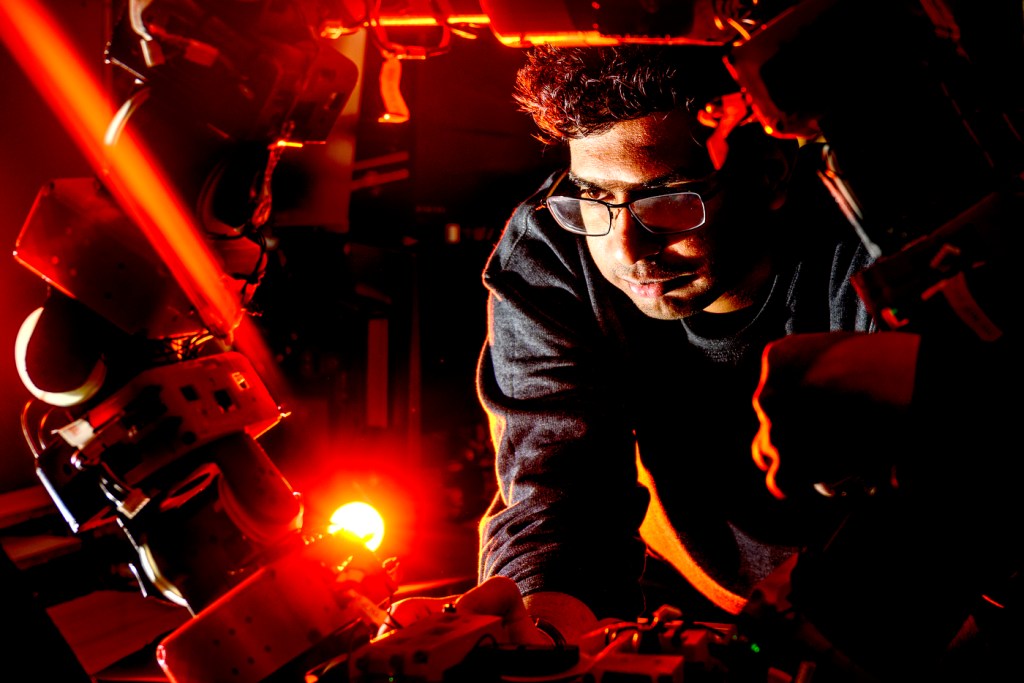
The robots wield chopsticks, rotate platforms and look like snakes.
Roboticists at the Institute for Experiential Robotics’ lab in the new EXP building are conducting transformative research. Robots are handling chopsticks for precise hand manipulation. Research continues with a snake-like robot created for NASA’s BIG Idea Challenge that can navigate in sandy environments like the moon. And the lab has fabrication rooms for electronics, 3D printing and laser cutting.
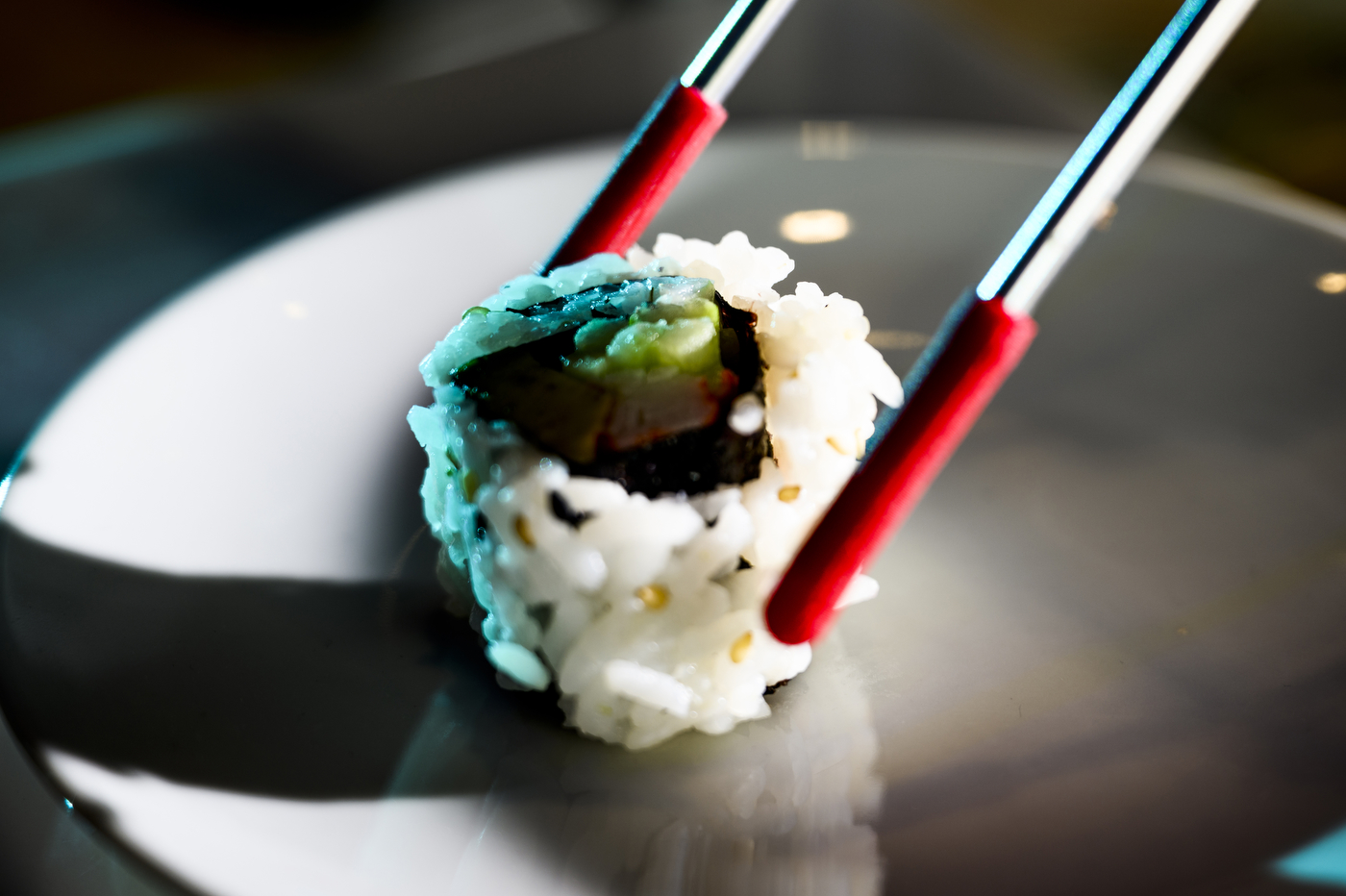

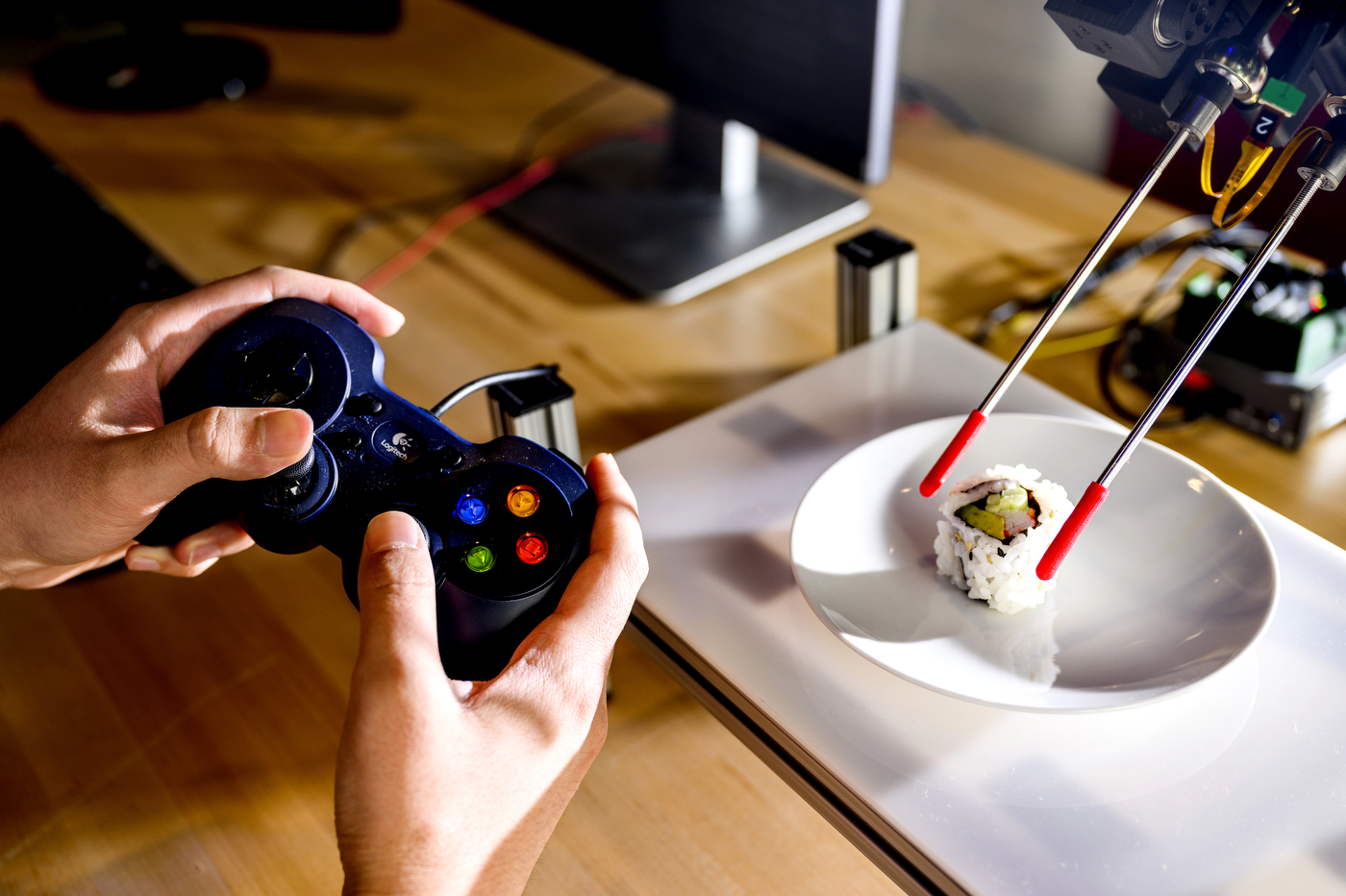
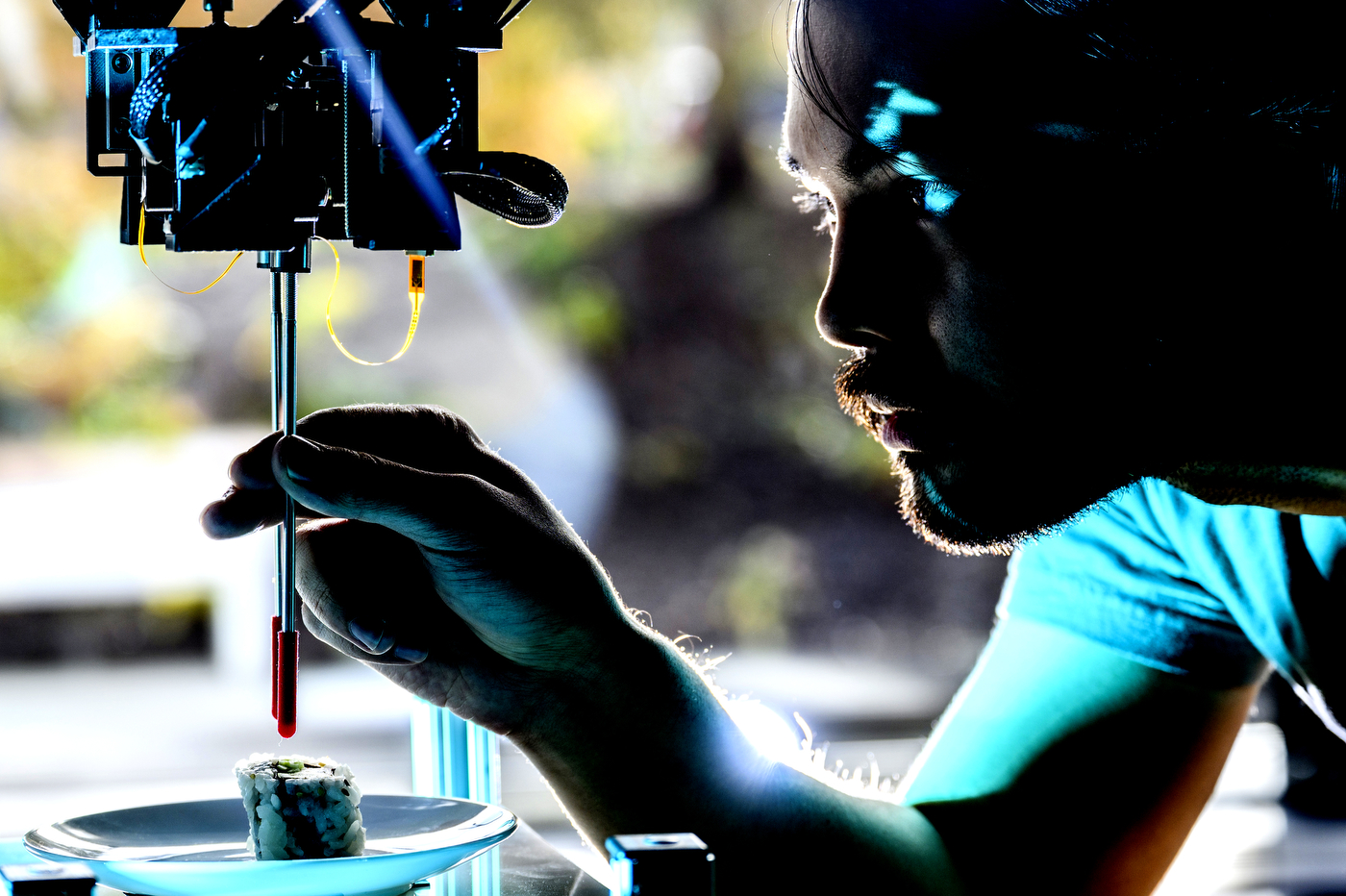
The new space takes up the majority of the first level of the eight-story science and engineering complex on the Boston campus. Its high bay area is about the size of a basketball court — decked out with robotics systems spanning the technological gamut, including collaborative robots, industrial robot arms, mobile robots, drones, virtual reality systems and much more.
The institute also has space on the seventh floor of EXP that includes additional robots, and desk and lab space for researchers to conduct their work.
“Our mission is straightforward in my mind — enrich human experiences through meaningful development and deployment of robotics technology,” says Taskin Padir, Northeastern robotics professor and director of the institute.
“We’ve been working with the design team for the past six years even before the groundbreaking of the building,” he says. “We had a vision for the space where we can demonstrate what we mean by experiential robotics.”
Several Northeastern students and faculty in the lab are working on projects being led by Padir.
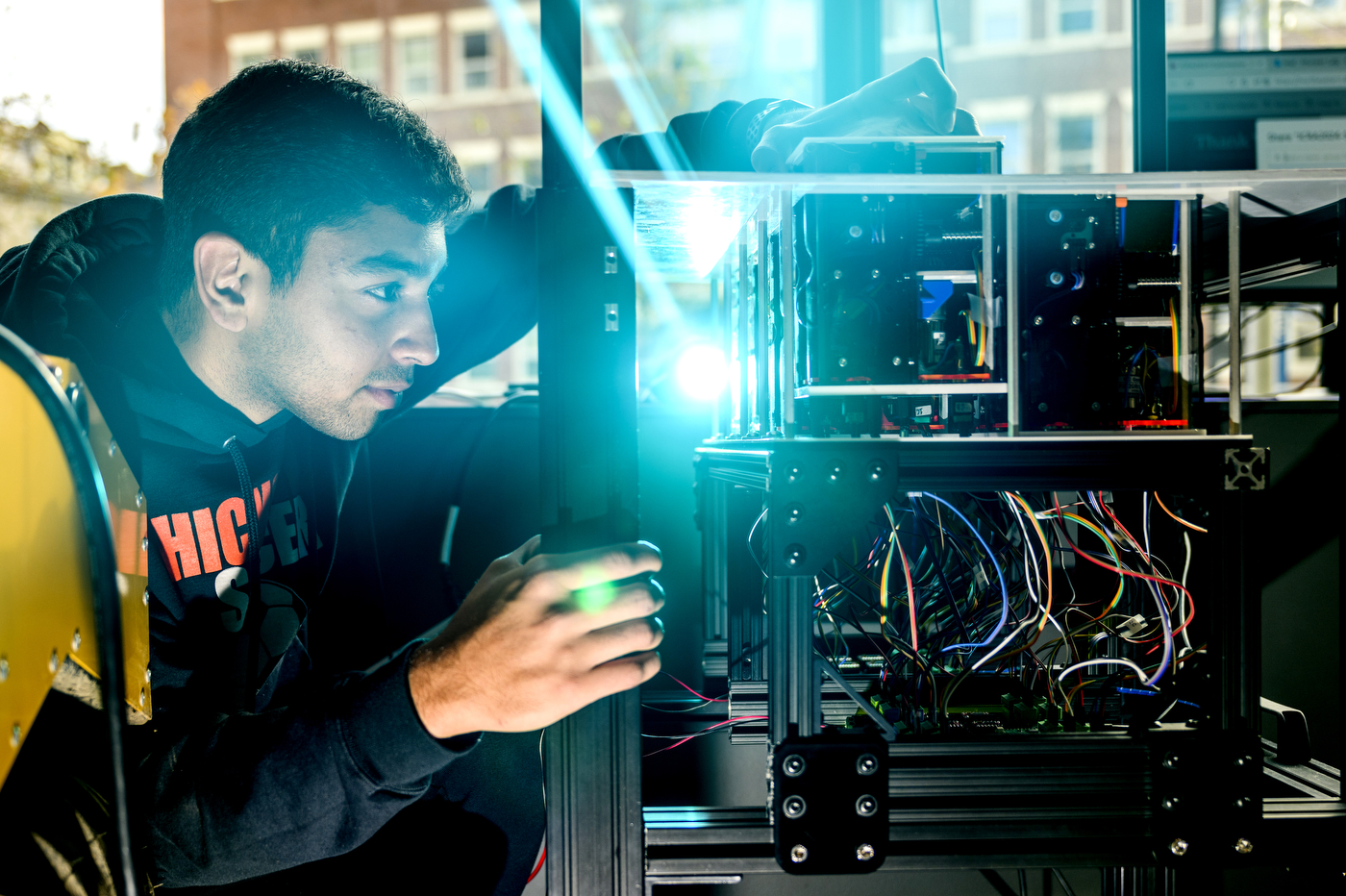
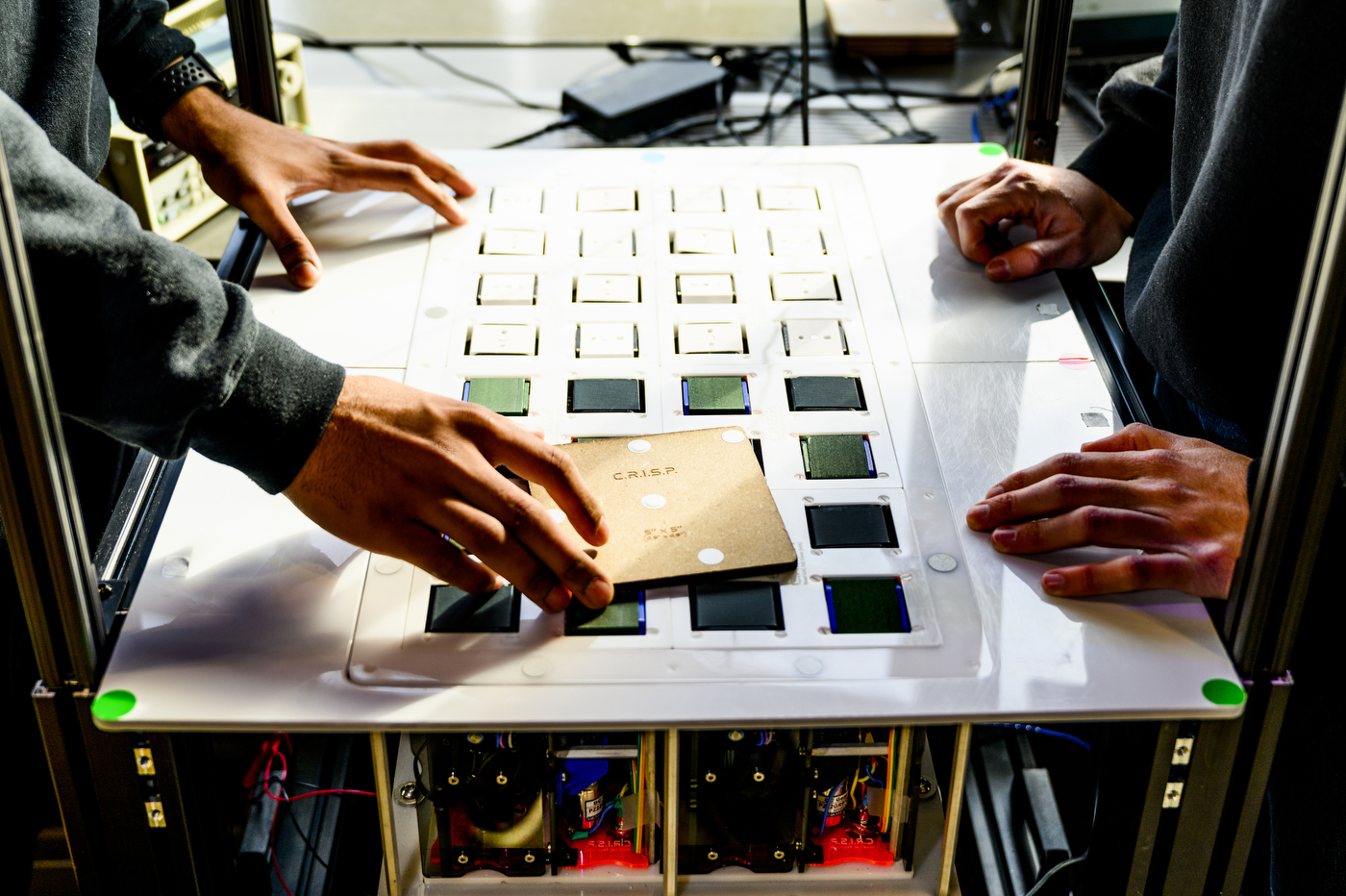
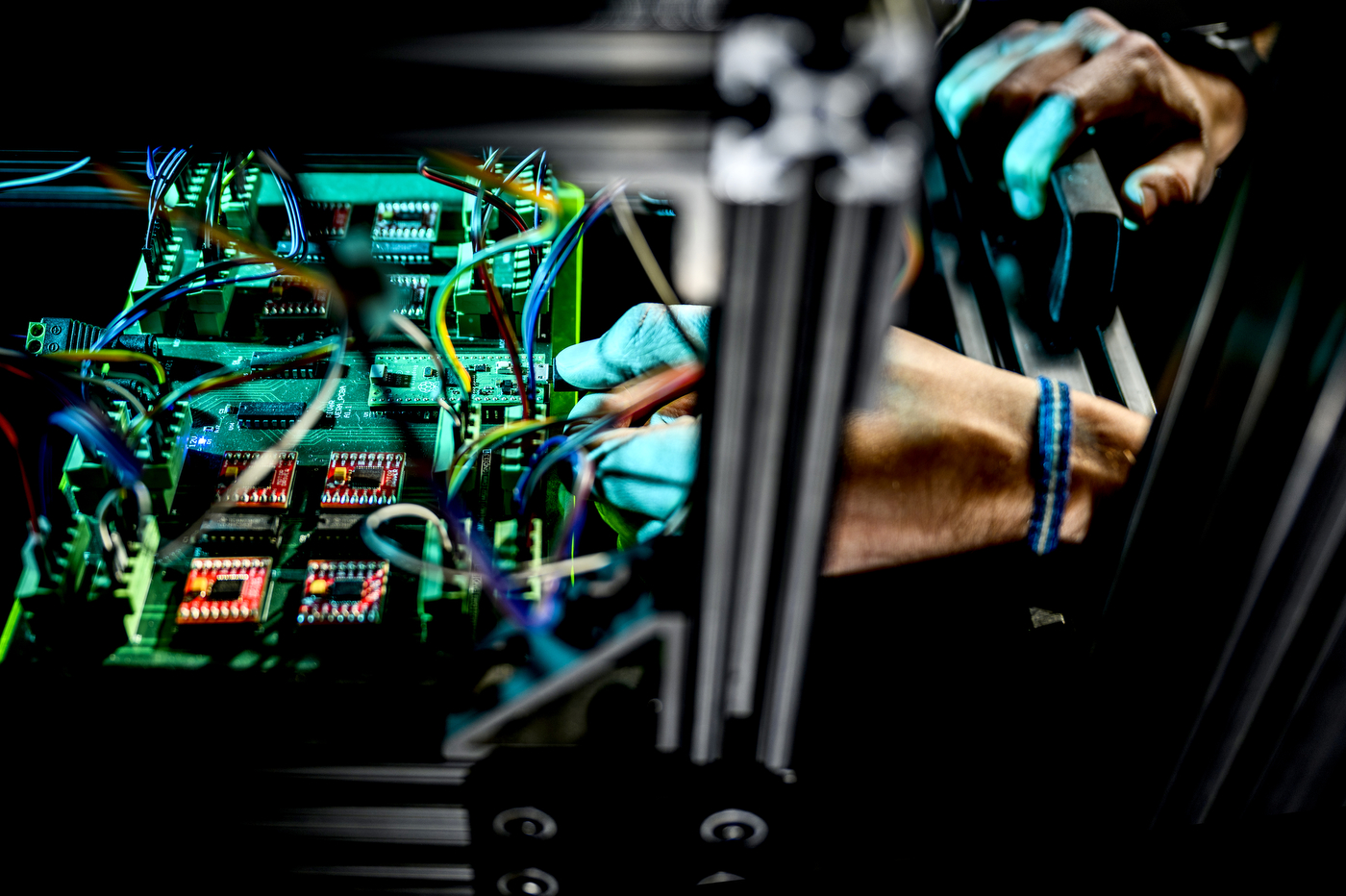
As part of a National Science Foundation grant, Northeastern developed a series of robotics applications designed to help workers in the seafood packaging industry use robots to move and pack products.
One of those systems involved creating a workstation that features an assistive robotic table. The name of the robotic system is VERA, which stands for voxel enabled robotic assistant.
Embedded in the table is a series of robotic cube-like devices called voxels. The voxels are able to spin to help move the location of an object, such as plastic packaging. The workcell also features a mounted camera to track the movement of an object.
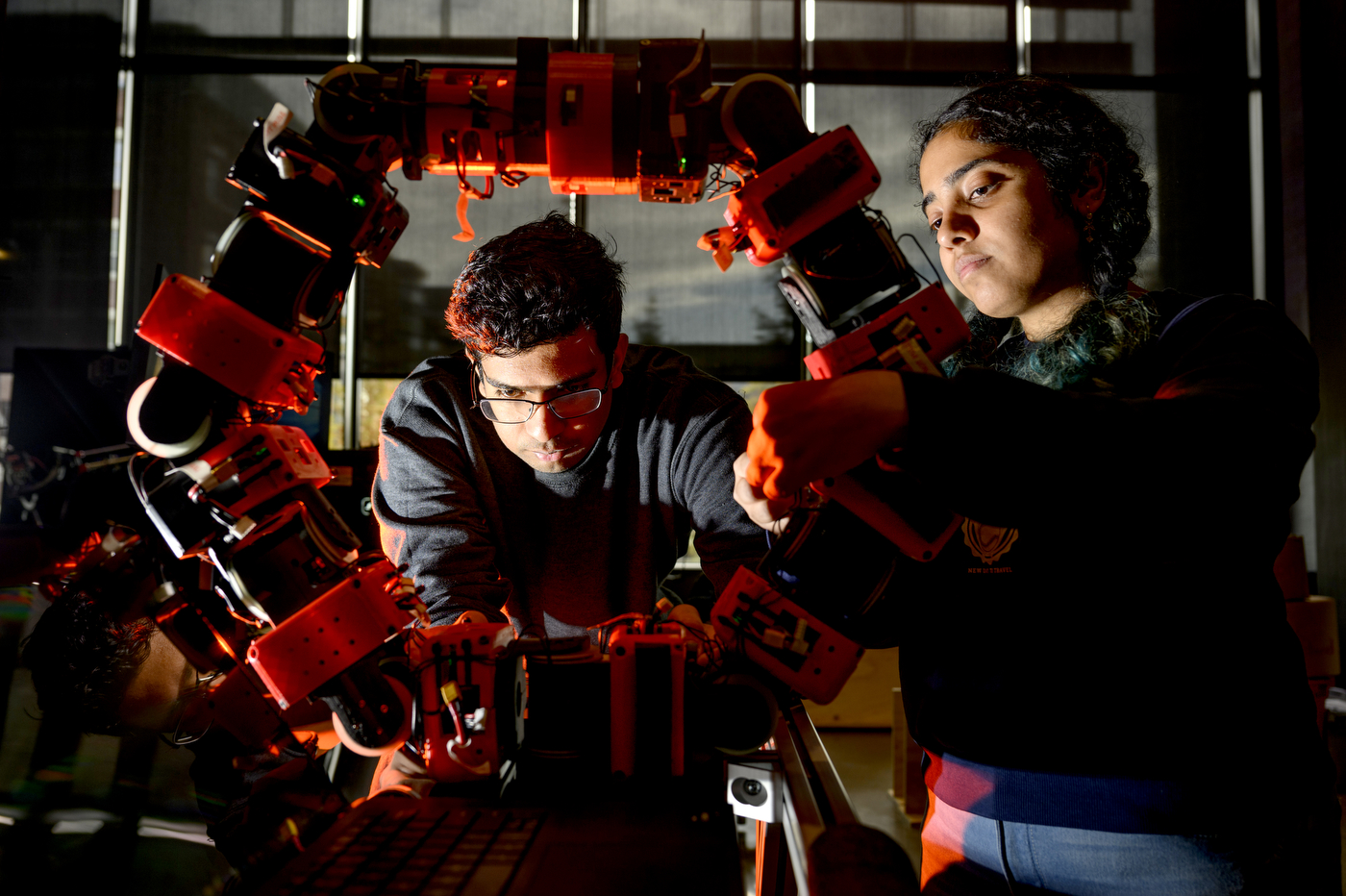

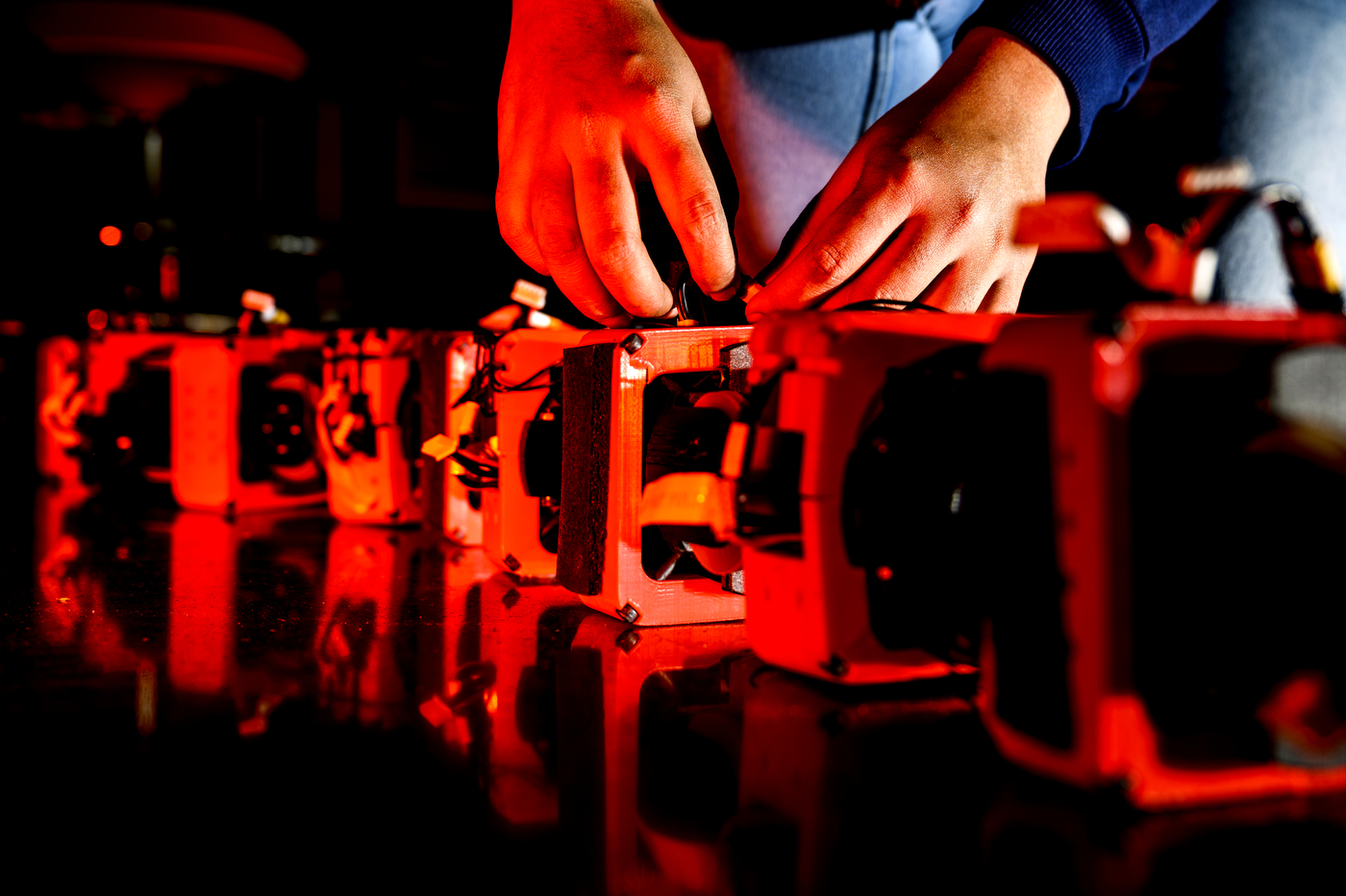
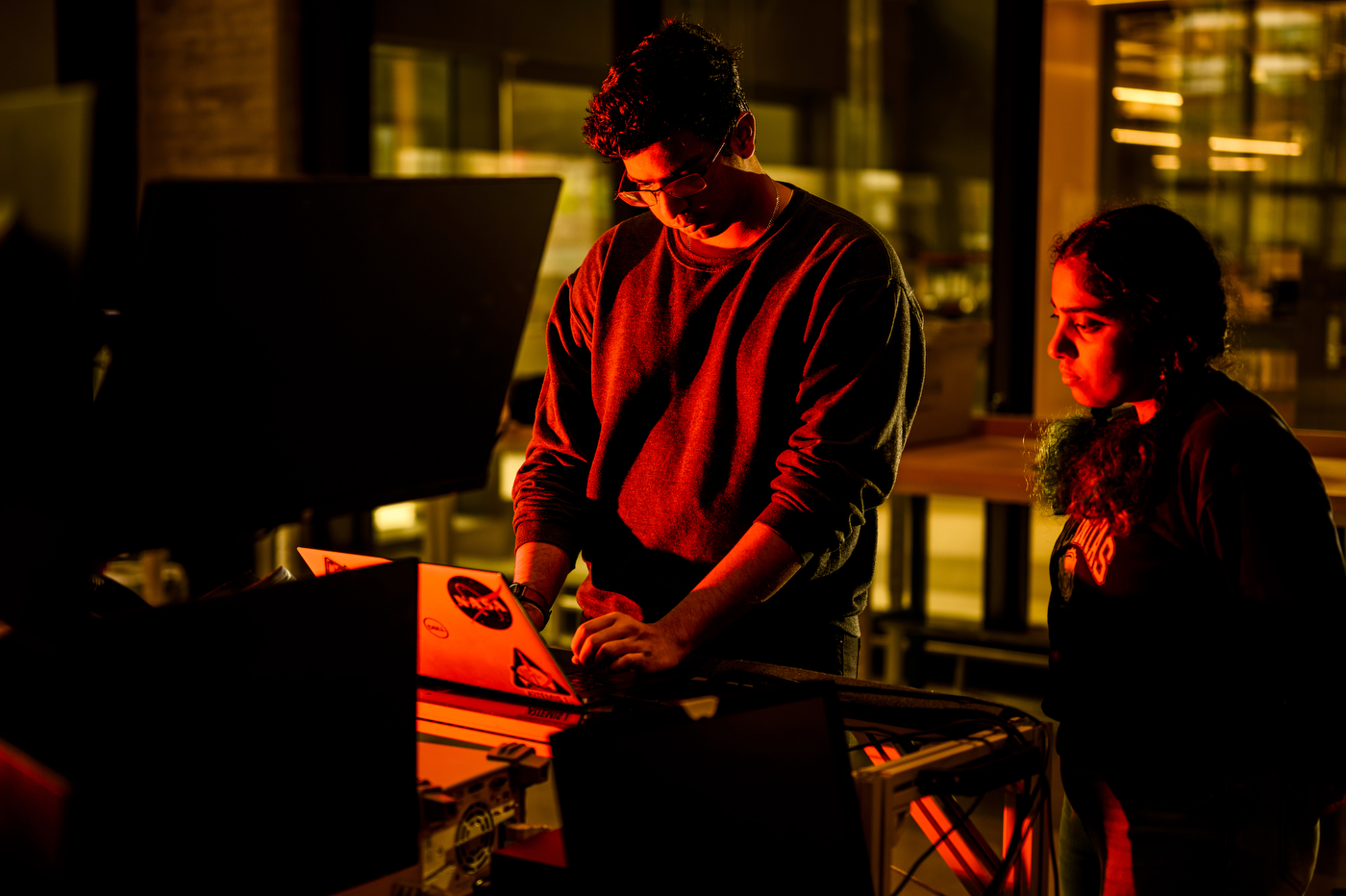
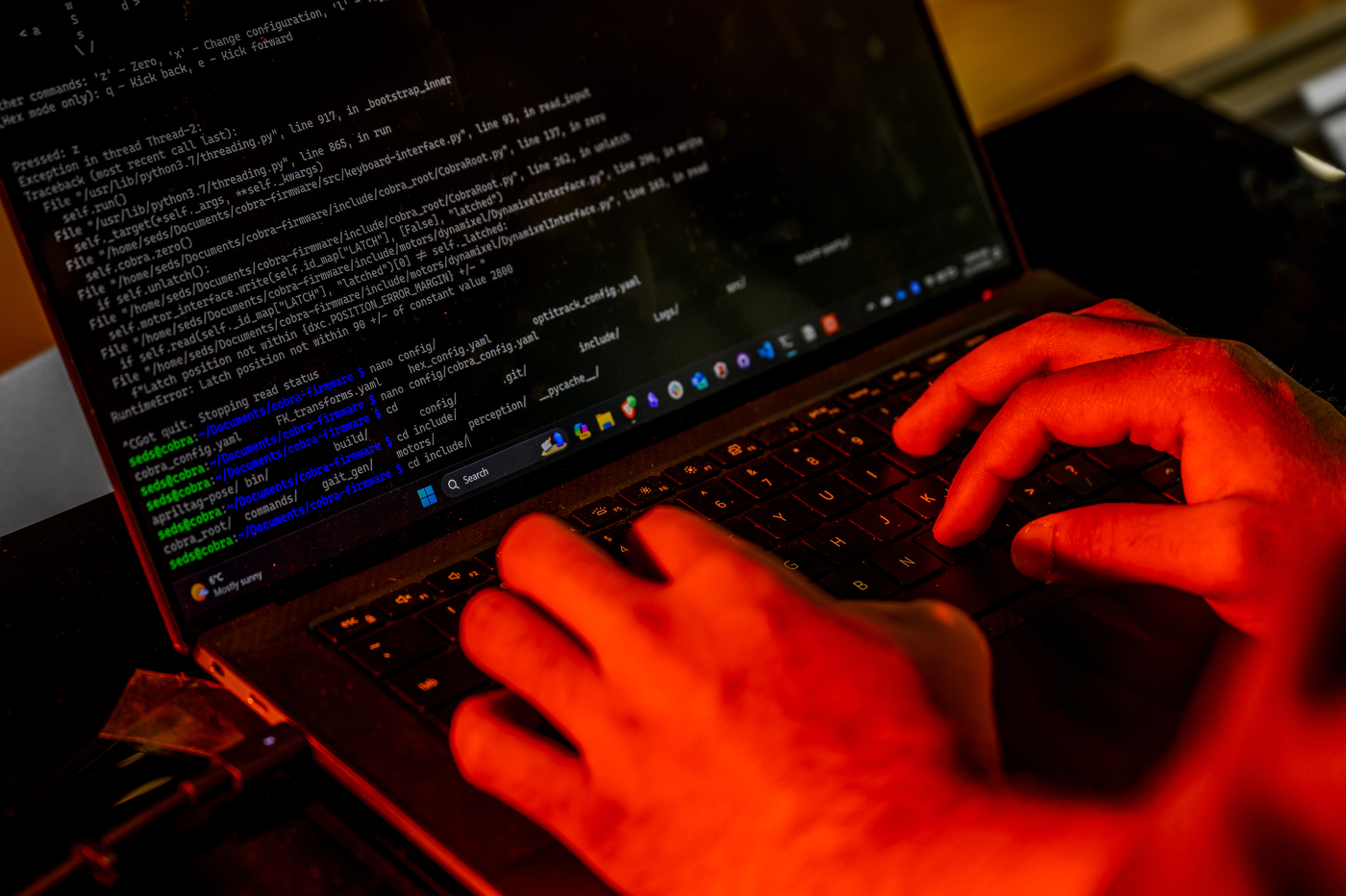
“The idea here was motivated by us having gone to seafood manufacturing sites and seeing people cut up really large fish like tuna and noticing that they had a lot of trouble moving around certain parts. So that motivated us to design a robot that wouldn’t interfere with your workspace,” says Mark Zolotas, a research scientist at Northeastern.
It’s a little different than what you would expect a typical robotic workcell to look since there are no robotic arms involved, he explains.
“We sort of see it as being a general way of rethinking about the way we view robots in general,” Zolotas says.
As of now, 20 faculty members working in a number of disciplines including robotics, artificial intelligence, computer science, physical therapy and entrepreneurship have a presence in the space, Padir says.
“It’s not the space or equipment that creates knowledge or pushes the boundaries of research,” Padir says. “It’s the people. Without researchers, we cannot do anything. It works in a hierarchical way — we have faculty who set the vision for projects then we have full-time postdoctoral researchers who help guide the Ph.D. students. We also have a very large cohort of master’s students in robotics. I envision they will get involved.”
“The institute also always provides experiential learning opportunities for our undergraduates. We have a track record of recruiting qualified students in our institute, so they will get involved in our research,” Padir adds.
Hanumant Singh, a professor of robotics at Northeastern, has a number of robots housed in the lab, including robots designed for underwater use. He says one of the key innovations of the lab is that it lets robotics researchers work together in a shared space.
“The biggest and the most important part of this is that we are working as a collaborative,” says Singh, who notes the lab’s large open space allows for modularity and allows researchers to use it any way they see fit. “It’s an open space that does not belong to anybody that’s reconfigurable based on the project and the people that are working on stuff.”
Julie Marble, executive director of the institute, echoed Singh’s sentiment.
“One of the main goals for the Institute for Experiential Robotics is to become the flagship for robotics at Northeastern,” Marble says. “If you want to have robotics at that level, you need to be not only interdisciplinary but you also need to have a lot of collaboration. One of the goals of this space is to create a space where all of our faculty and their grad students can work together collaboratively.”
Doctoral students Adarsh Salagame and Kruthika Gangaraju are certainly taking advantage of the space. They were part of the team behind the COBRA system, or the Crater Observing Bio-inspired Rolling Articulator.
Our mission is straightforward in my mind — enrich human experiences through meaningful development and deployment of robotics technology.
Taskin Padir, Northeastern robotics professor and director of the Institute for Experiential Robotics’ lab
The snake-like robot was created for NASA’s BIG Idea Challenge, which called on teams of students to develop a robotic system designed to navigate difficult terrain. Aliereza Ramezani, Northeastern assistant professor of electrical and computer engineering, led the team that developed the project. The goal was to develop a robot that could operate on the lunar south pole.
They turned to nature to find a solution, Salagame says.
“Snakes are well-documented to be able to operate in these sandy environments,” Salagame says after demoing the robot for Northeastern Global News. “Other typical robots don’t operate in these kinds of environments, so that’s where the snake locomotion came about.”
One notable aspect of the CORBA system is its ability to connect both of its ends to create a perfect circle, which allows it to easily roll down hills while using little energy, explains Marble.
“It can travel an extremely long distance without losing any power,” she says.
Austin Allison is another one of Padir’s students exploring using robotics for seafood packaging. A doctoral student studying bioengineering, he is part of the research team that created HASHI, or the highly adaptable seafood handling instrument.
In a demo for Northeastern Global News, Allison showed the robotic system in action, which is composed of a robot arm and end of arm tools that look like chopsticks. (Hashi is also the Japanese word for chopsticks.)
The robot is designed to handle, manipulate, and move small pieces of fish food like sushi, he says. And what’s the best way to handle sushi? With chopsticks, of course.
“We thought, ‘Well there’s probably been thousands of civilizations and billions of people throughout history that have used chopsticks not only for sushi but to cook entire meals,’” he says.
Allison says each chopstick appendage has three degrees of freedom and can be controlled using a video game controller. The robot chopsticks are able to manipulate the items in hand fairly easily. Ideally, this system will be used for packaging of pre-made meals (think lunchables as an example.)
“There’s a term in robotics called hand manipulation, which is if you want to think of picking something up and doing it like a pinch and roll,” he says. “It’s interesting to be able to do it on a small scale.”
Allison highlighted that the new robotics lab has been a great addition and he loves that he now has more space to do dedicated research.
“Our desks are a bit more separated from loud and distracting machinery, as well as larger hardware that is kept on the first floor,” he says. “We also have more dedicated rooms for fabrication, like a purpose-build machine shop, an electronics/3D printing/lasercutting room, etc.”
As he progresses through his doctorate, Allison says he’s excited to check out more of what’s on offer in EXP.
“Having future access to some of the previously unavailable tooling in the first floor of EXP (waterjet cutter, CNC router and mill, welding, etc.) will enable me to efficiently prototype and create more advanced hardware for future robotics projects and endeavors,” he adds.
Cesareo Contreras is a Northeastern Global News reporter. Email him at c.contreras@northeastern.edu. Follow him on X/Twitter @cesareo_r and Threads @cesareor.






